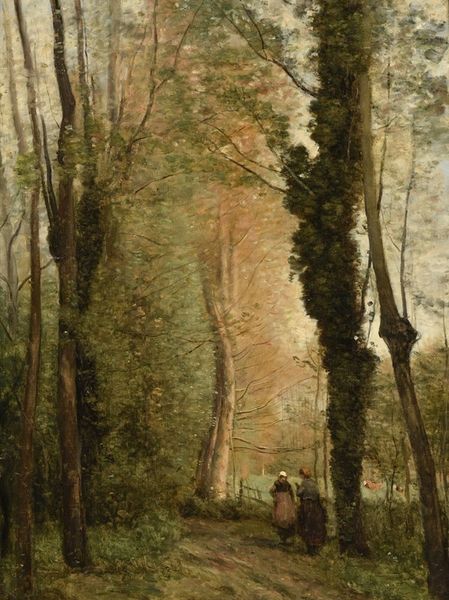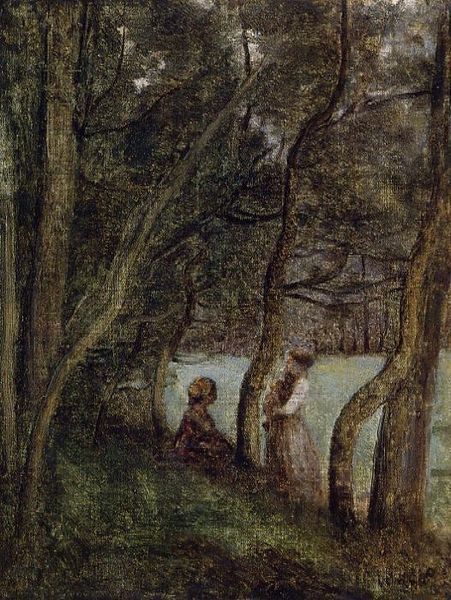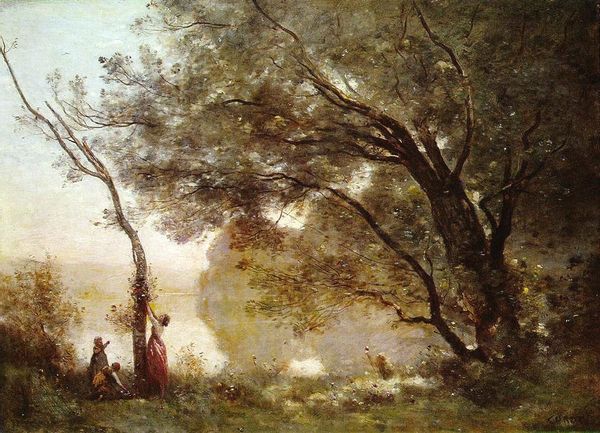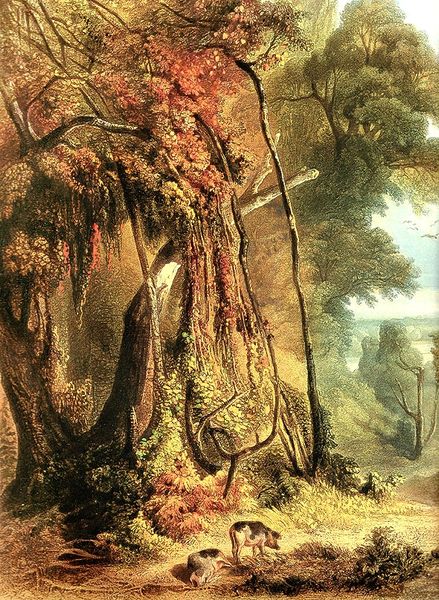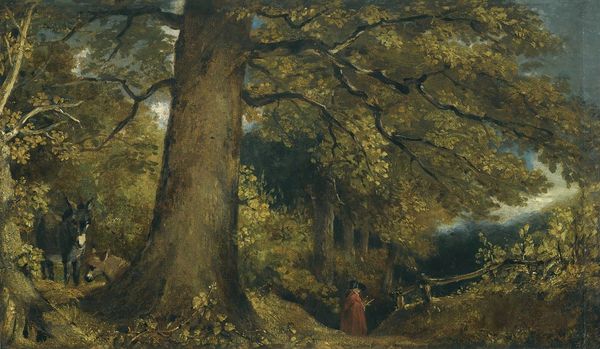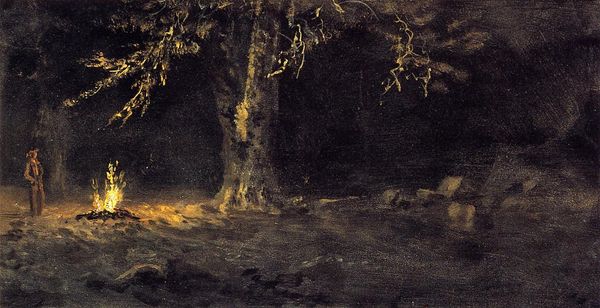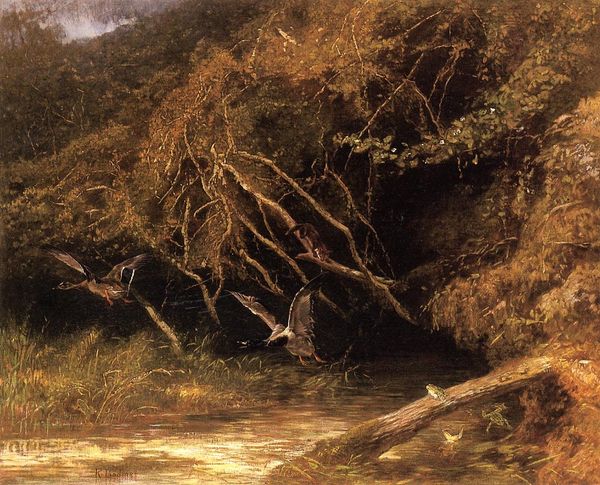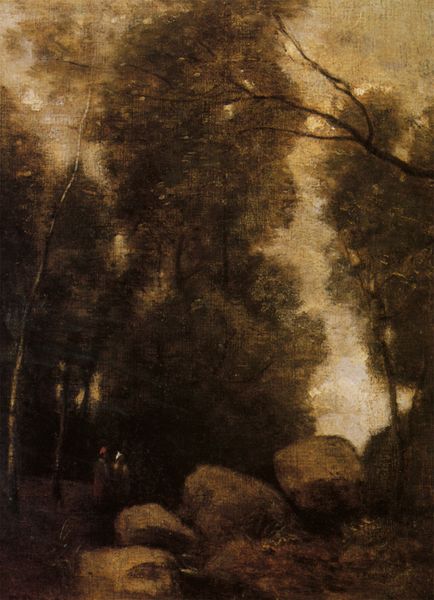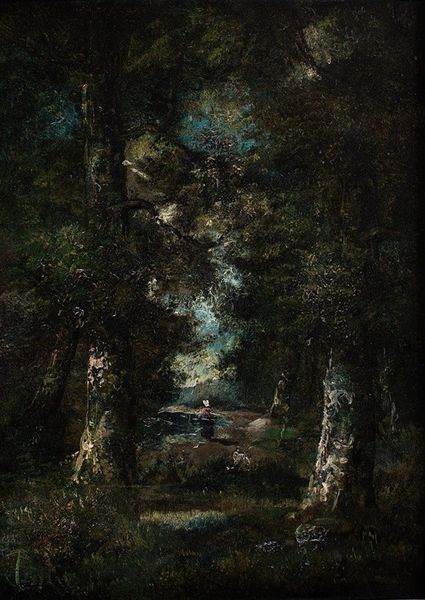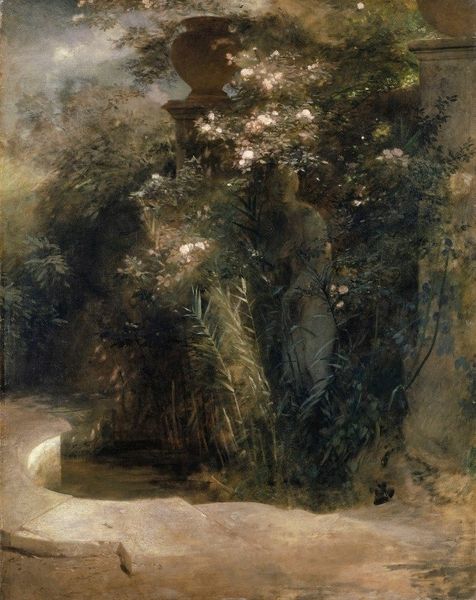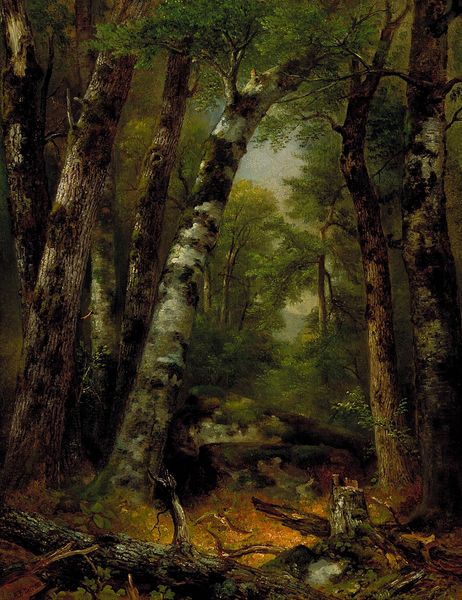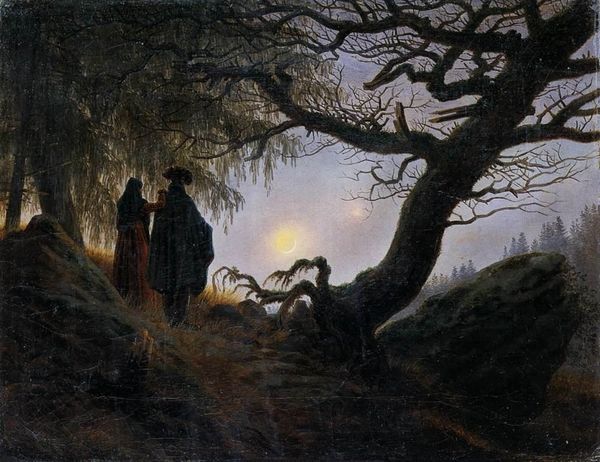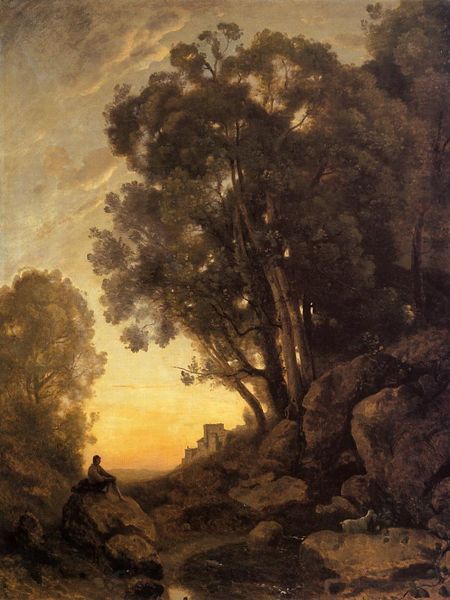
Dimensions: 170.5 x 260.4 cm
Copyright: Public domain
Editor: This painting is called *Dante and Virgil*, and it was painted by Camille Corot in 1859. It’s oil on canvas, and the whole scene has a really dark, almost oppressive mood to it, especially with those animals lurking in the shadows. How do you interpret this work, particularly in relation to the art world at the time? Curator: The Romantics really latched onto Dante, didn't they? This work sits interestingly within Corot’s overall landscape production and the broader cultural obsession with Dante. We need to consider *Dante and Virgil* as part of the rise of Dante in popular imagery. The painting visualizes the narrative, sure, but more importantly it offers a reading. Look how the path seems closed to the figures by the wolf. Editor: Right, it's not just an illustration. What’s Corot saying about this specific moment in Dante’s *Inferno*? Curator: I think Corot's landscape becomes a comment on the social realities of his time. France after the 1848 revolutions experienced profound political and social upheaval. Is this a subtle commentary on the blockage of social progress or the artist’s perceived difficulties facing him, by social realities acting as these animals from *Inferno*? How would a painting like this function in an exhibition context? Editor: That’s fascinating. So the placement, the viewers, everything influences our understanding… Curator: Absolutely. Think about the publics attending museums then. The bourgeoisie grappling with rapid industrialization and urbanization – might they find parallels between Dante’s crisis and their own anxieties? This interpretation adds depth. Editor: I’ve learned a lot. Looking at it through a historical lens, makes me look at *Dante and Virgil* with new appreciation. It seems more complex and relevant than before. Curator: It is important to remember context shapes everything we see and consider who gets to define those contexts.
Comments
No comments
Be the first to comment and join the conversation on the ultimate creative platform.

